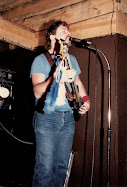BASS STRING
I’m not going to get into the technical string sizes, because they come in different diameters, but to mention the two different types which are roundwound strings and flatwound strings. Roundwound strings are the most popular type that most bass player’s use today. They have a brighter, metallic sound and are used for all types of music. The second kind is flatwound strings. I’m not sure if their lack of use comes from people just never trying them or what. I used the nylon tape wound strings years ago on my Fretless Fender bass and also tried the flatwound strings at that time. I use the flatwound strings a lot now especially in the studio. You do not get the zipping sound when you change notes on the recording. They are also easier on the fingers. If you do a lot of sliding on the strings this type is for you. If you do a lot of recording you may want to try this type. If you are performing out a lot the roundwound have a real good sound. Experiment from time to time and use what sounds best for you.
Monday, May 5, 2008
Friday, May 2, 2008
PLAYING IN A LIVE BAND
If you are playing bass with a live band the thing not to do, is trying tooting your own horn. A live band is like a team and you must be as a team. There are some players who are just all out “ball hogs”. Do not overplay to show off. Keep the playing simple and the song will turn out a lot better. Also in the studio play simplistic bass patterns and the recording will be cleaner and neater. If you are playing with a drummer, the bass and the drummer should play together. When you’ve played with a drummer for a while, you know his every move and he knows yours. You will eventually get it down to the last drumbeat and roll that he does. This makes your music tighter. If there is no drummer in the band your bass playing becomes the beat just like the bass drum in a drum set. The other instruments become the snare drum in the drum set. You usually play on the beat and the other instruments play off the beat.
Labels:
bass guitar,
guitar lessons,
music
Subscribe to:
Posts (Atom)





